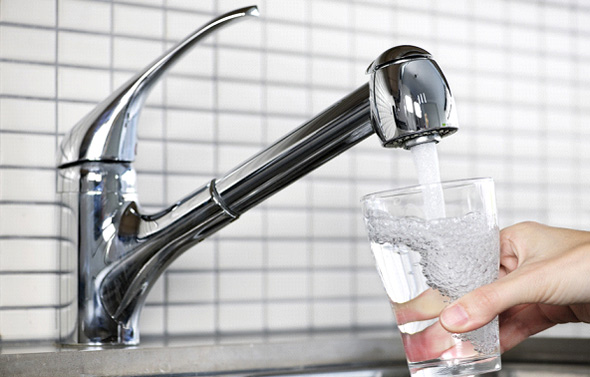The mission of BGMU is to be customer focused in all we do. One way we remain customer focused is by protecting public health. BGMU is dedicated to providing safe, clean, and reliable drinking water to the community. We work diligently to provide a product that enhances your quality of life. Detailed information about the overall quality of BGMU’s drinking water can be found in the Annual Water Quality Report.
The Lead and Copper Rule (LCR) has been in effect since 1991. The rule requires communities to not only test for the presence of lead in the water distribution system but also to implement a treatment technique to serve as a barrier against its occurrence. BGMU’s drinking water does not contain lead when it leaves our treatment plant.
Can I See Service Line Inventory Data?
Yes, inventory information can be found here.
How Does Lead Enter Drinking Water?
The most common source of lead in drinking water is from corrosion in lead pipes, faucets, and fixtures. Corrosion is a dissolving or wearing-away of metal caused by a chemical reaction between water and plumbing. Every two hours (at a minimum), BGMU monitors and adjusts your water’s pH levels and uses treatment methods that reduce the likelihood of corrosion. However, it is possible for lead to develop in drinking water as it passes through lead pipes, copper pipes with lead solder, faucets, and fixtures.
Is Lead Regulated and Tested in Bowling Green?
Yes, lead is regulated by the EPA through an Action Level that requires treatment changes if more than ten percent of the homes tested exceed fifteen (15) parts per billion (ppb) of lead in first-draw samples. BGMU complies with all EPA testing regulations.
How Can I Reduce Exposure?
Lead is a toxic metal that was used for decades in products found in and around our homes. Swallowing lead paint chips or breathing in lead paint dust presents the biggest risk of exposure. Ingestion can cause health concerns for people of all ages, particularly pregnant women, infants, and young children. In children, low exposure levels are linked to learning disabilities, behavioral problems, and other issues. No amount of lead is safe.
If you want to minimize potential exposure to lead in drinking water, follow these simple steps:
- Run the Tap Before Use – Lead levels are likely at their highest when water has been sitting in pipes for several hours. Clear this water from your pipes by running cold water for several minutes. This easy process allows you to draw fresh water from the water main to use for cooking or cleaning.
- Clean Aerators – Aerators are found at the tip of most faucets and can usually be screwed on and off. They can collect small particles of lead in their screens. It’s a good idea to remove your aerators monthly. Soak them in vinegar for 15 minutes, and clean any accumulated particles.
- Use Cold Water for Drinking and Cooking – Always cook and prepare baby formula with cold water. Lead dissolves more quickly in hot water, resulting in higher lead levels.
- Filter the Water – Certified filters are effective in reducing lead exposure. Ensure your filter is certified by NSF (National Sanitation Foundation). You can find more information about filter certification at nsf.org.
Do I Have a Lead Service Line?
Property owners are responsible for the portion of the service line that connects the home to the water meter. The water main and the portion of the service line from the meter to the water main is owned and maintained by BGMU. Plumbing, faucets, and fixtures inside the home are also the responsibility of the home owner.
If you are concerned that your home plumbing contains lead pipes, we suggest contacting a licensed plumber for assistance. You can also visit the EPA’s website for a guide to identify lead pipes.

Visit epa.gov/lead for more information regarding lead.

